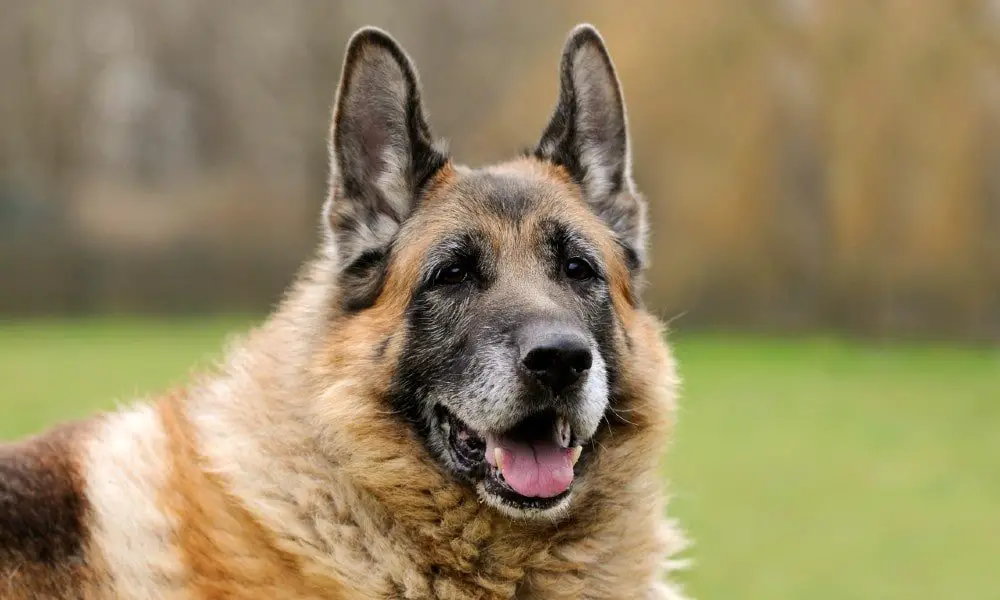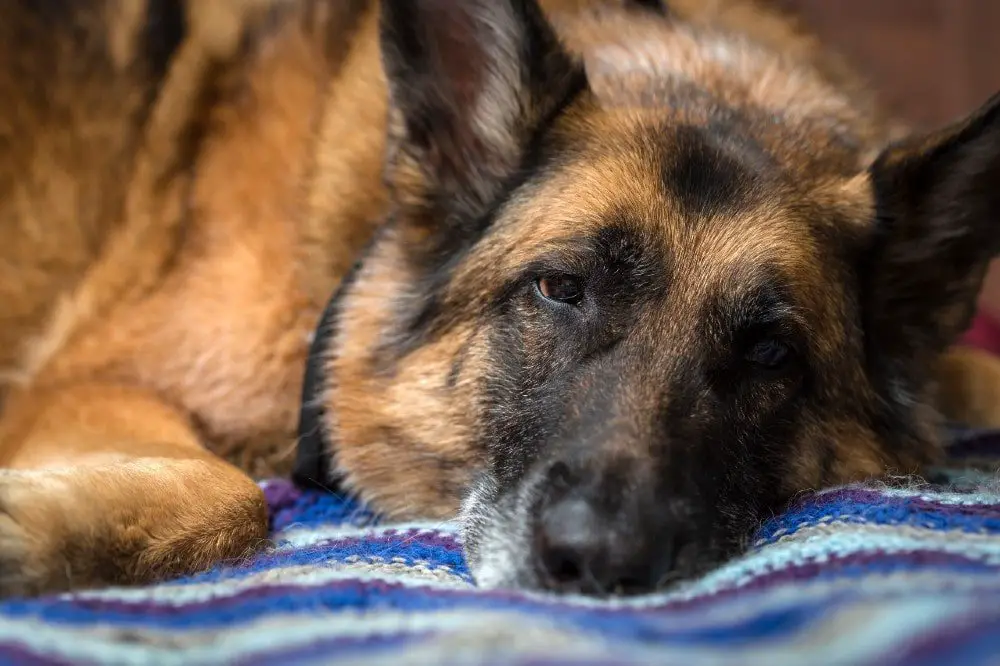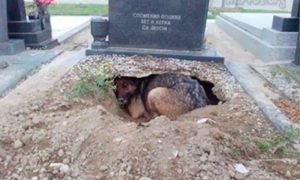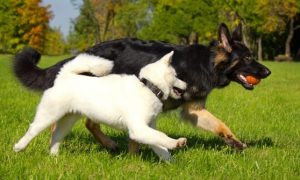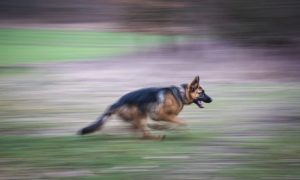Dogs can experience vision loss in the same way humans do.
As your canine companion ages, their eyesight will likely deteriorate gradually. One eye might lose sight, or both eyes may be affected.
Dogs of any breed are susceptible, but this is most likely seen with older dogs due to similar genetic predispositions found in humans who suffer from age-related ocular diseases.
Diseases such as macular degeneration cause a gradual decrease of central visual acuity resulting from death at the back part of an aging retina.
You may not know if your dog is having vision problems until you see the telltale signs. Of course, they’ll use their other senses to make up for what they can’t do and continue doing all they can to hide their disability, but there are some warning signs.
10 Signs Your Dog is Going Blind
1. The most obvious sign of poor sight in dogs is when they begin walking into furniture or other objects.
2. Do not recognize familiar people.
3. General clumsiness.
4. Difficulty seeing in poorly lit areas.
5. Rely heavily on sniffing out food instead of tracking it with their eyes.
6. Your dog avoids jumping or is having problems navigating stairs. This is due to their depth perception changing.
7. Drooping eyelids or red eyes.
These symptoms indicate underlying causes like parasites or wet macular degeneration, which could potentially affect the way sight develops over time but needs veterinary attention right away before things get worse.
8. Watery eyes.
9. Rubbing or scratching of the eyes.
10. Visible cloudy spots on one or both of your dog’s eyes caused by Glaucoma or Cataracts.
Glaucoma is the cause of these spots. Glaucoma causes increased pressure in your dog’s eyes. It prevents fluid from escaping, which leads to cloudiness forming around their eyeballs that eventually spread until they completely cover the lens, leaving them blind.
Cataracts are more common in senior pets but can start at any age and can be in one or both eyes. A cataract can be a small cloudy area that affects some vision, or it can cover the entire lens of the eye, causing partial or total vision loss in that eye. Left untreated cataracts can cause pain due to irritation.
4 Tests to Check Your Dog’s Vision at Home
If you suspect your dog is going blind, you can check your dog’s vision at home with a few simple tests. These tests shouldn’t be treated as scientific or replace professional advice.
These tests are easy to do and will let you know if it is time to consult a veterinarian to have your dog’s eyes checked out more closely.
1. Dilation Test
Dilation tests are essential for telling how your dog’s eyes work. A dog’s eyes will dilate and constrict the same as yours do.
Healthy pupils will open up in darker environments and constrict in brighter ones to regulate how much light is getting into the back of the eye.
To perform this test, have your pup lie down and grab a standard small flashlight (avoid using high-powered lights). Shine the beam over its eyes from different angles to make sure both normally react before moving onto other tests.
When a dog is exposed to light, the pupils constrict. If they stay dilated even in bright lights, your dog may already be blind. Take your dog to the vet for an accurate diagnosis and proper treatment.
2. Nighttime Obstacle Test
One of the most overlooked signs that our canine friends may be going blind is because they don’t have problems getting around the house. Realistically, your dog memorized your home’s layout long ago and knows exactly where every couch and side table you own exists.
An easy way to see if your dog is slowly going blind is by moving some furniture around. Night vision is often the first thing to deteriorate, so do this test when it’s dark. If you do this obstacle test during daytime hours, your dog may use what little remaining vision they have left to navigate the obstacles.
After rearranging some furniture, put your dog on one end of the room and call them to you. Only call your dog once. Otherwise, they will use your voice to make their way to you. If your dog makes contact with the furniture, it’s likely their vision is impaired.
3. Reflex Test
The reflex test will help you determine how your dog reacts to objects coming close to its face. Blinking will instinctively occur as an object approaches its eyes.
This test can help determine how dogs respond to objects approaching them closely by measuring their blinking speed and frequency when they see something moving quickly at them.
If your dog fails to blink, they can’t see the object in front of them because blindness is present.
To perform this test, use an area with good lighting and place one hand over one eye. Test one eye at a time to get accurate results.
Slowly bring your other hand in front of the uncovered eye. Start from the corner of your dog’s eye until your hand is in their line of vision.
Do this slow enough not to create a push of air or touch any whiskers. Blinking indicates your dog can see your hand. No blinking means you need to make a vet appointment.
4. The Cotton Ball Test
This test is designed for your dog to follow a moving object with its eyes. Like the reflex test, perform it in a well-lit area, cover one eye, and test one eye at a time.
Watch your dog’s uncovered eye and drop a cotton ball from a height above them where they cannot see and in front of them from about 6 inches away. A dog with normal vision will follow the falling cotton ball to the floor.
Use a dry cotton ball that will fall silently to the floor, preventing your dog from using other senses to react.
This test can be done at different distances to determine how well your dog can see.
When You Need to Take Your Dog to the Vet
If your dog fails any of the above tests, they need an official eye exam by a professional.
A vet will perform a routine examination and may refer you to an animal ophthalmologist for serious vision concerns.
Dog Blindness Conclusion
Deteriorating eyesight in dogs is not likely curable, but depending on the severity of your dog’s eye condition, a quality diet, medications, or surgery, if recommended, can slow down or stop more sight loss.
Be on the lookout for sight concerns as your dog ages. Use the above signs and tests to catch vision issues as early as possible to protect your dog’s eyes and vision.

